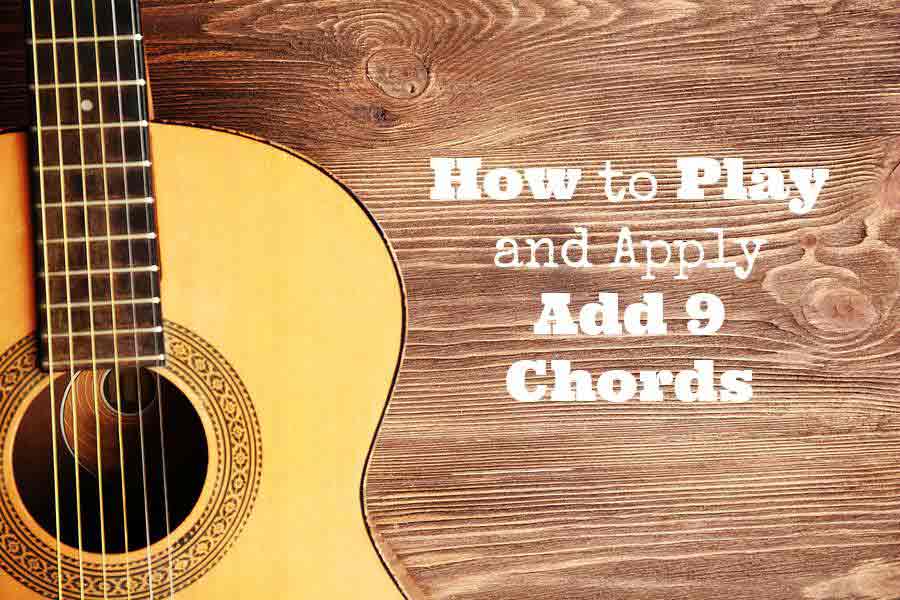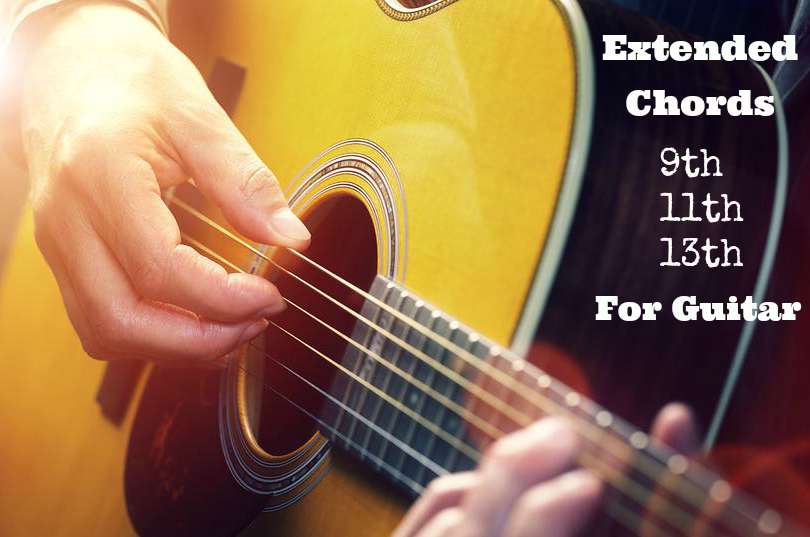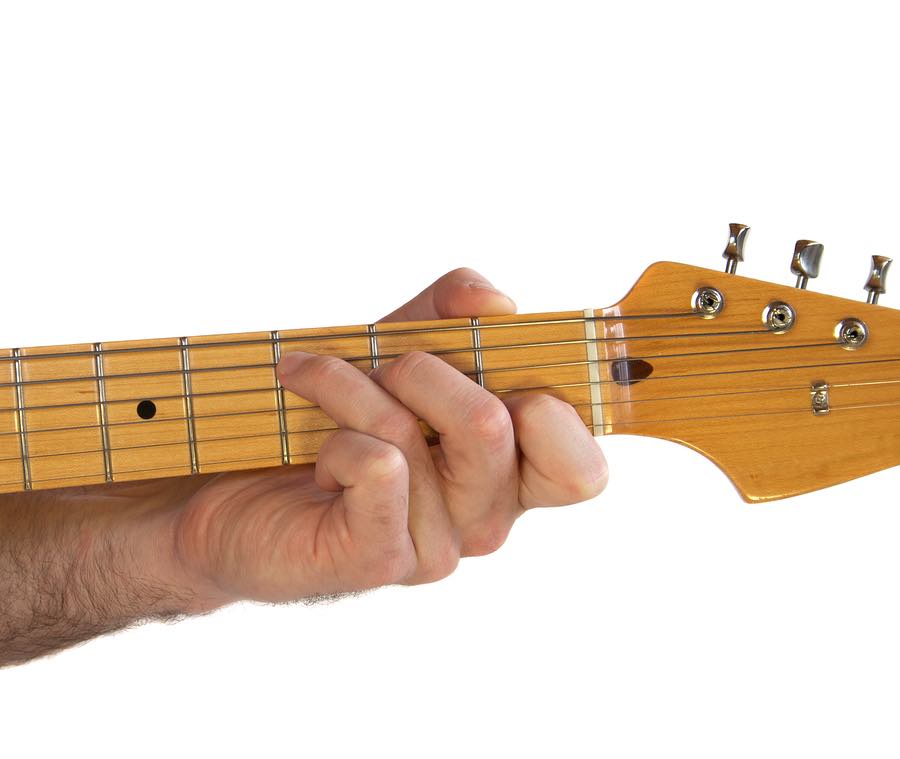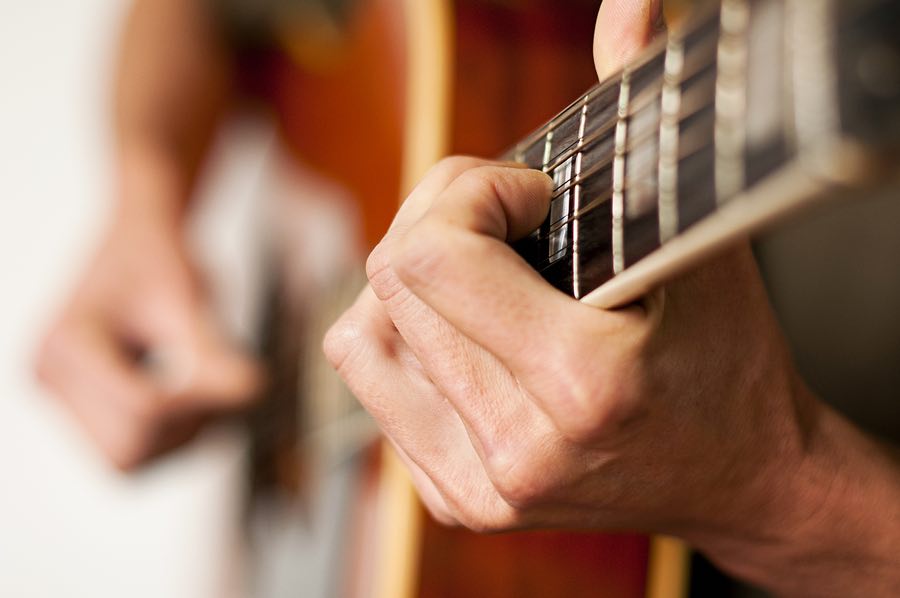
To make chords, chord progressions and songs more colorful guitar players use chord embellishments.
Chords like sus2, sus4, maj6, maj7 and add9 can all be used to spice up your playing and create more interesting sounds.
The add9 chord is a big favorite in pop and acoustic rock music.
Chord Analysis
The add9 chord is simply a major triad with an added ninth (9).
The major triad consists of the root (1), the major third (3) and the perfect fifth (5).
So the add9 chord formula = 1 3 5 9
Let’s take Cadd9 chord as an example.
We look at the C major scale: C D E F G A B C and we take the root (1st), 3rd, 5th and 9th note of that scale and you get the notes: C-E-G-D. So Cadd9 = C E G D
 Extended chords are usually used in jazz music, but also in other styles like pop, blues and latin music to spice up chord progressions and add some nice flavor to the chords.
Extended chords are usually used in jazz music, but also in other styles like pop, blues and latin music to spice up chord progressions and add some nice flavor to the chords.
